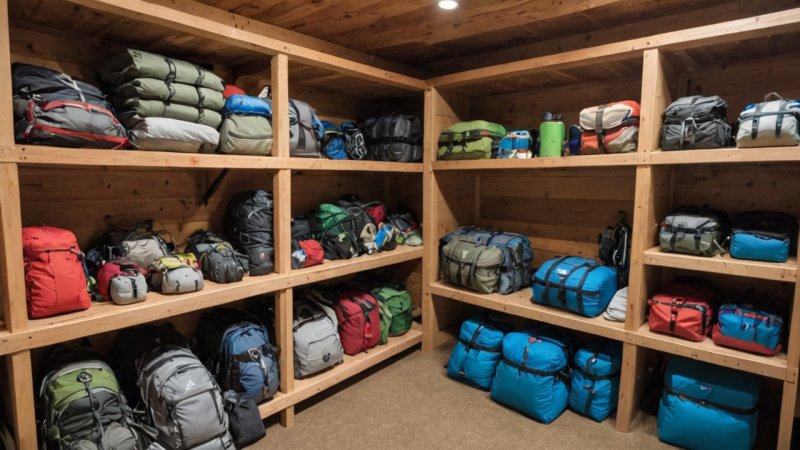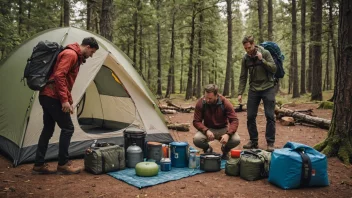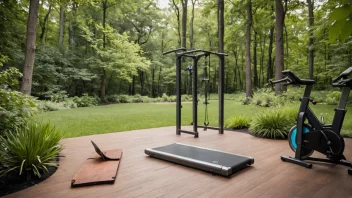Outdoor adventures are an exhilarating way to connect with nature, but they also come with their own set of responsibilities, particularly when it comes to the gear we use. Proper care, safety, and storage of outdoor equipment can significantly enhance your experience while ensuring longevity and functionality. In this article, we will explore essential practices for maintaining safety and effective storage of outdoor gear, focusing on various types of equipment including camping gear, hiking tools, and sports equipment. By following these guidelines, you can enjoy your outdoor activities to the fullest while keeping your gear in top shape.
Understanding the Importance of Gear Safety
Before diving into storage practices, it's vital to recognize why safety is paramount. Outdoor gear is often subjected to harsh conditions, and improper handling can lead to accidents or equipment failure. This section discusses the key reasons why maintaining safety should be a priority for any outdoor enthusiast.
- Preventing Accidents: Well-maintained gear is less likely to malfunction, reducing the risk of accidents during use.
- Enhancing Performance: Properly cared-for equipment performs better, whether it’s a tent with all its poles intact or a bike with well-lubricated components.
- Extending Lifespan: Outdoor gear can be a significant investment. Following safety and storage best practices extends the lifespan of your equipment, saving you money in the long run.
Best Practices for Gear Storage
Storing outdoor gear correctly is crucial for maintaining its integrity and readiness for your next adventure. Below are some best practices for various types of outdoor equipment.
1. General Storage Guidelines
- Clean Before Storing: Always clean your gear after use. Dirt, moisture, and organic materials can lead to mold, corrosion, and damage.
- Dry Thoroughly: Ensure all items are completely dry before storage, especially tents, sleeping bags, and clothing, to prevent mildew.
- Store in a Cool, Dry Place: Avoid places with extreme temperatures or humidity; a climate-controlled environment is ideal.
2. Storing Camping Gear
Camping gear often includes a variety of items such as tents, sleeping bags, cooking equipment, and more. Here’s how to store each effectively:
- Tents: Store tents in their original bags or a dedicated storage sack. Avoid folding them in the same creases every time, which can weaken the fabric.
- Sleeping Bags: Use a large cotton storage sack rather than the compression sack for long-term storage to maintain loft and insulation.
- Cooking Gear: Keep pots, pans, and utensils in a designated box or bag, ensuring all items are clean and dry before storage.
3. Storing Hiking Gear
Hiking gear, including backpacks, footwear, and trekking poles, requires special attention to ensure readiness and functionality:
- Backpacks: Empty all pockets and compartments, clean them, and store them in a dry place. Hanging them can help maintain their shape.
- Footwear: Clean and dry shoes thoroughly. Store them in a cool, dry place, and consider using cedar shoe trees to maintain shape.
- Trekking Poles: Collapse and clean poles before storage. Store them upright or in a bag to prevent damage.
4. Storing Sports Equipment
For those who enjoy outdoor sports, proper storage of equipment like bicycles, kayaks, and fishing gear is essential:
- Bicycles: Clean your bike after each ride. Store it in a dry place, ideally on a bike rack, to prevent damage to the tires and frame.
- Kayaks: Store kayaks in an upright position or on a padded rack to prevent warping. Ensure they are clean and dry.
- Fishing Gear: Clean rods and reels after each trip. Store lines in a cool, dry place, and keep tackle boxes organized and dry.
Safety Checks Before Use
Before you head out for an adventure, conducting safety checks on your gear can prevent mishaps. Below are some essential checks to perform:
1. Inspecting Tents
- Check for Damage: Look for holes, tears, or compromised zippers.
- Test Stakes and Poles: Ensure all stakes and poles are in good condition and free of rust.
2. Examining Hiking Gear
- Footwear Fit: Make sure your hiking boots fit correctly and have no signs of wear.
- Backpack Load: Check the weight distribution and adjust straps for comfort and stability.
3. Evaluating Sports Equipment
- Bicycle Brakes: Test brakes and gears before riding.
- Kayak Stability: Ensure that all components, including paddles and life jackets, are in good condition.
Tips for Enhancing Gear Longevity
To ensure your outdoor gear lasts as long as possible, consider the following tips:
- Regular Maintenance: Set a schedule for regular cleaning and maintenance checks, especially for high-use items.
- Use Proper Storage Containers: Invest in durable containers or bags designed specifically for outdoor gear.
- Follow Manufacturer Guidelines: Always adhere to the specific care instructions provided by manufacturers for each piece of equipment.
Conclusion
Practicing proper safety and storage techniques for outdoor gear is not just about prolonging the life of your equipment; it’s about ensuring your own safety and enhancing your overall outdoor experience. By following the best practices outlined in this article, you can enjoy your adventures with peace of mind, knowing that your gear is well taken care of and ready for the next outing. Remember, the outdoors is unpredictable, but with the right preparation, you can embrace it fully and safely.






